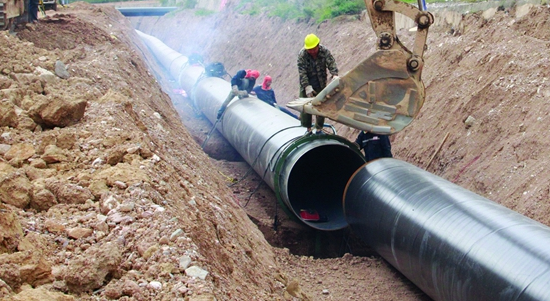
The Importance of Preheating before Welding
Preheating refers to heating the workpiece to be welded to above room temperature before or during welding. According to the application standard of the material, the current specification usually requires several preheating temperature levels.

The pre-weld and post-weld specifications require preheating. However, under certain conditions, other preheating methods can also be used. Regardless of whether preheating is required, preheating has the following advantages.
2. Slow down the cooling rate of the weld in the critical temperature range, prevent excessive hardening, and reduce the ductility of the weld and the heat-affected zone.
3. In the temperature range of 400°F, slow down the cooling rate to allow hydrogen to escape from the weld to prevent hydrogen-induced cracking.
4. Remove contaminants.
The preheating temperature range is usually suitable for various weld groove sizes and constraints. Although the minimum preheating temperature is specified, a lower preheating temperature and a higher preheating temperature will be used under certain circumstances.
Also pay attention to actual operation skills to avoid material softening caused by preheating. Choose welding processes and electrodes that rarely introduce hydrogen. Some techniques can reduce or reduce residual stress. Carefully monitor to ensure the correct use of preheating methods. The following descriptions are correct The successful use of these techniques is very important.
Dimensions and techniques of welding groove
The skills in the welding process have a great influence on welding shrinkage, residual stress, heat input control and avoiding cracks. Compared with long welds, short welds have less longitudinal shrinkage. Backhand welding or special welding sequences can also be used. To reduce residual stress, control or reduce heat input.
Reduce cracks
By using appropriate manufacturing processes, arc craters and welding cracks can be reduced or eliminated.
Welds with circular cross-sections produce fewer cracks than thin, wide-section welds, to avoid sudden welding or stopping. The weld formation is controlled by the up-and-down welding technology or the electrical method of the welding power source. There must be enough deposited materials. In order to avoid welding shrinkage or cracks caused by normal welding.
Preheating method
Preheating in the workshop or in the field can use flame heating, electronic induction heating, resistance heating and other methods. No matter what method is used, the preheating needs to be uniform. Unless there are special requirements, the preheating needs to penetrate the entire thickness of the weldment.
Tips: ERW welded pipe is formed by rolling strip and welding the seam, with tighter dimensional tolerances and less weight. The weld seam is heat treated after welding that no untempered martensite remains, and the weld flash can be removed from both inner and outer surfaces. ASTM A53 ERW steel pipe is a typical carbon steel pipe. It is largely used to convey fluids at low / medium pressures such as oil, gas, steam, water, air and also for mechanical applications.
- 【Prev】 : Steel Pipe Submerged Arc Welding Process
- 【Next】 : Oil Casing Pipe Hydraulic Test


